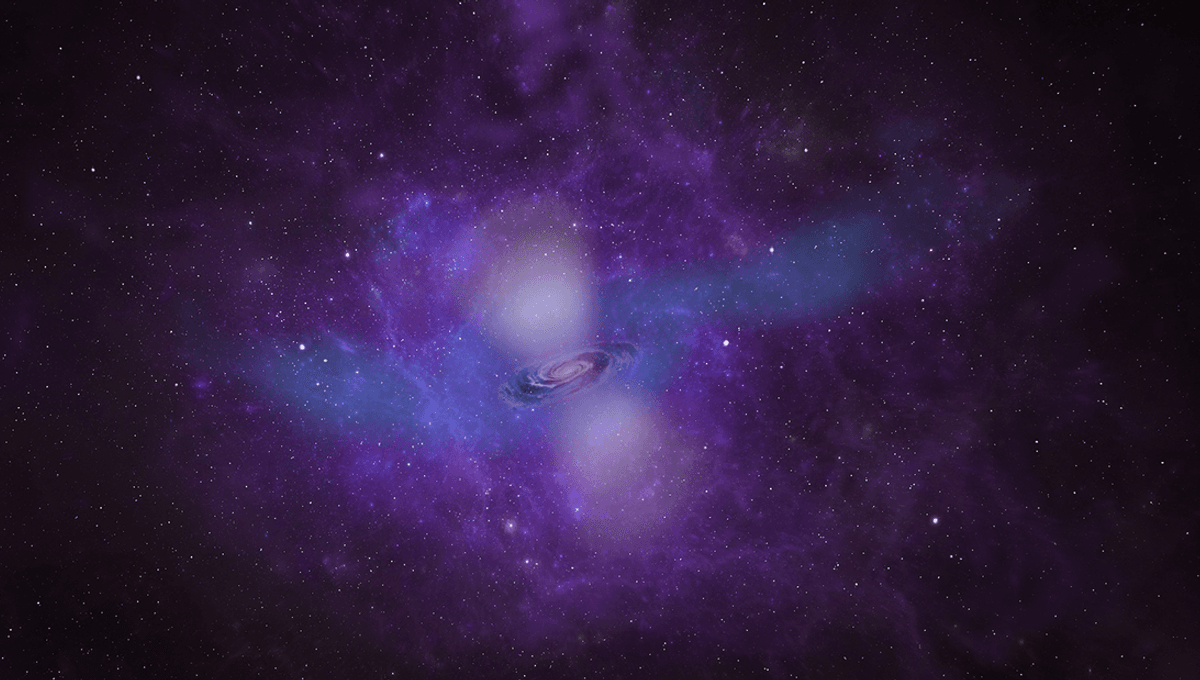
Humans confirmed the existence of other galaxies surprisingly late. Only 100 years ago, in fact, when Edwin Hubble found a type of star known as Cepheid variables within Andromeda, and used them to measure the galaxy’s distance.
As luck (or, in fact, proximity and gravity) would have it, astronomers soon figured out that Andromeda is likely on a collision course with our own galaxy. This is nothing to worry about of course, as star collisions are unlikely given the unfathomable distances between them. Plus, you will be long dead when the collision happens 4.5 billion years in the future.
However, a new study looking at how far galaxies extend suggests that they are far larger and extend farther than we thought, suggesting the Milky Way may already be in contact with Andromeda.
“Most of a galaxy’s mass is located beyond its stellar component, spread out to hundreds of kiloparsecs,” the team explained in their paper. “This diffuse reservoir of gas, the circumgalactic medium [CGM], acts as the interface between a galaxy and the cosmic web that connects galaxies.”
The halo of gas contains most of a galaxy’s baryonic mass (i.e. the mass we can see, which excludes dark matter), making up about 70 percent of it. Despite this, we know relatively little about it, as we have only been able to study it by observing how much light from background objects like quasars are absorbed as they pass through the cloud of gas. Such techniques, while undoubtedly clever thinking, provide only a little idea of the cloud’s overall shape.
“Quasars only probe a single pencil beam sightline for each galaxy and their random alignments relative to foreground galaxies mean that direct observations of CGM substructure have remained elusive,” the team wrote.
Using new deep imaging techniques the team looked at starburst galaxy IRAS 08339+6517, around 270 million light-years away, attempting to discover how far the cloud of gas extends. According to their findings, while the galaxy’s stars extend out to about 7,800 light-years from the galactic center, the CGM extended at least 100,000 lightyears. In short, galaxies appear to be a whole lot bigger than we thought.
“We found it everywhere we looked, which was really exciting and kind of surprising,” Associate Professor at Swinburne University, Nikole M. Nielsen, said in a statement.
“We’re now seeing where the galaxy’s influence stops, the transition where it becomes part of more of what’s surrounding the galaxy, and, eventually, where it joins the wider cosmic web and other galaxies. These are all usually fuzzy boundaries. But in this case, we seem to have found a fairly clear boundary in this galaxy between its interstellar medium and its circumgalactic medium.”
While incredibly interesting to know that galaxies could extend far further than we thought in and of itself, the discovery could lead to a better understanding of how galaxies interact, evolve, gain and lose gas, and create new stars.
“The circumgalactic medium plays a huge role in that cycling of that gas,” Nielsen explained. “So, being able to understand what the CGM looks like around galaxies of different types – ones that are star-forming, those that are no longer star-forming, and those that are transitioning between the two –we can observe differences in this gas, which might drive the differences within the galaxies themselves, and changes in this reservoir may actually be driving the changes in the galaxy itself.”
Evidence suggests that Andromeda is likely on a collision course with our own galaxy, though a recent study lowered the odds down to about a coin flip. If galaxies are larger than we thought, however, it’s possible the process has already begun.
“It’s highly likely that the CGMs of our own Milky Way and Andromeda are already overlapping and interacting,” Nielsen added.
The study is published in Nature Astronomy.
Source Link: Our Galaxy May Already Be Colliding With Andromeda